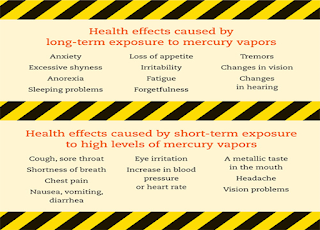Mercury Spillage
Introduction
Over the years, mercury containing thermometers or sphygmomanometers have been slowly replaced with electronic devices due to the potential hazard risks. However, if your facility still has these devices, you may have to know very well on this topic.
When mercury is spilt from a broken sphygmomanometer or thermometer, it can break into multiple small droplets.
- An increase of total surface area and/or room temperature causes the mercury to volatilize at a faster rate.
- The spilt mercury may also get adhered to clothes and shoes; and get transported to another location.
Proper/adequate ventilation in a room can dilute the mercury concentration in the air to a safe level.
Mercury Spill Management
If a mercury spill occurs, immediately:
Inform clinic/ward supervisor and call for assistance.
Isolate the area with red/white tags and signages. Turn off the fan and air conditioner (where applicable) and open the windows and doors for 24 hours (where applicable).
Avoid walking on or touching any surface contaminated with mercury.
Remove all jewellery and put on personal protective equipment.
- PPE: N95 face masks, disposable plastic apron, disposable shoe cover, safety googles, nitrile gloves
Locate broken glass pieces of sphygmomanometer/thermometer.
- Collect broken instrument glass pieces using disposable forceps.
- Put broken instrument glass pieces into a puncture proof plastic container and seal tight with tape (smaller pieces into urine container and larger pieces into sharps bin container).
Use torchlight to locate shiny mercury beads.
- Collect the larger beads using cardboards or syringe/eye dropper. Put collected mercury into urine container half filled with water.
- Collect the smaller beads using cellophane tape and put into a puncture proof or double layered plastic bag.
Coat contaminated area with sulphur to remove hard-to-see mercury beads.
- Next press the damp paper towel on the sulphur powder to pick up the sulphur powder and bound mercury.
- Put the damp paper towels with sulphur and mercury into a double layered leak proof plastic bag.
Put all the collected items and used PPE into a single bag (double layer) and tie securely and label.
- Send to concession company for safe disposal (It is recommended that the mercury is disposed of within 180 days in accordance with the Environmental Quality (Scheduled Wastes) Regulations 2005.
Submit WEHU & CPRC forms to OSH and mercury incident reporting to pharmacy.
- Replace used items in mercury spill kit.
Reminder
Never use a vacuum cleaner, mop or broom to clean up a mercury spill.
Never dispose mercury into the sewage system, sink, clinical bin, sharps bin or the dust bin.
If you are pregnant, get your colleague or any other staff to do the clean-up.

Comments
Post a Comment